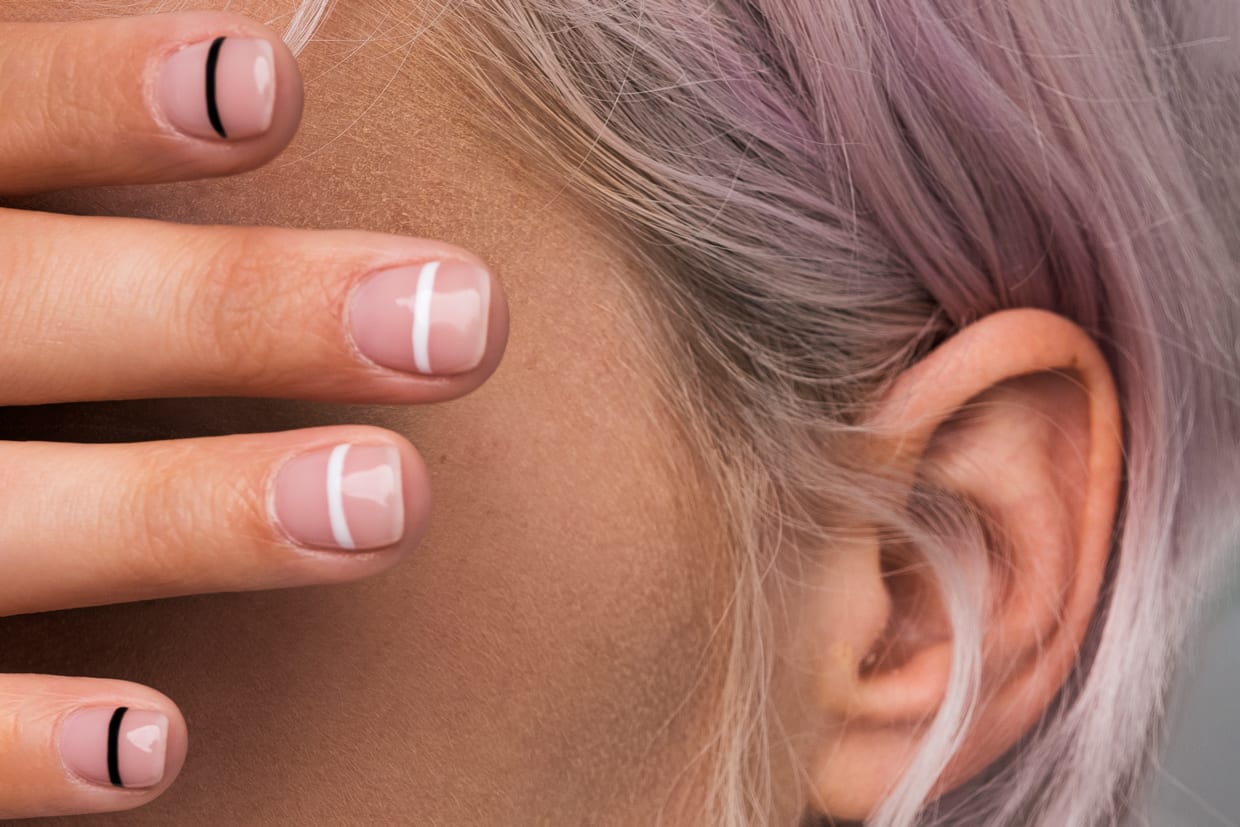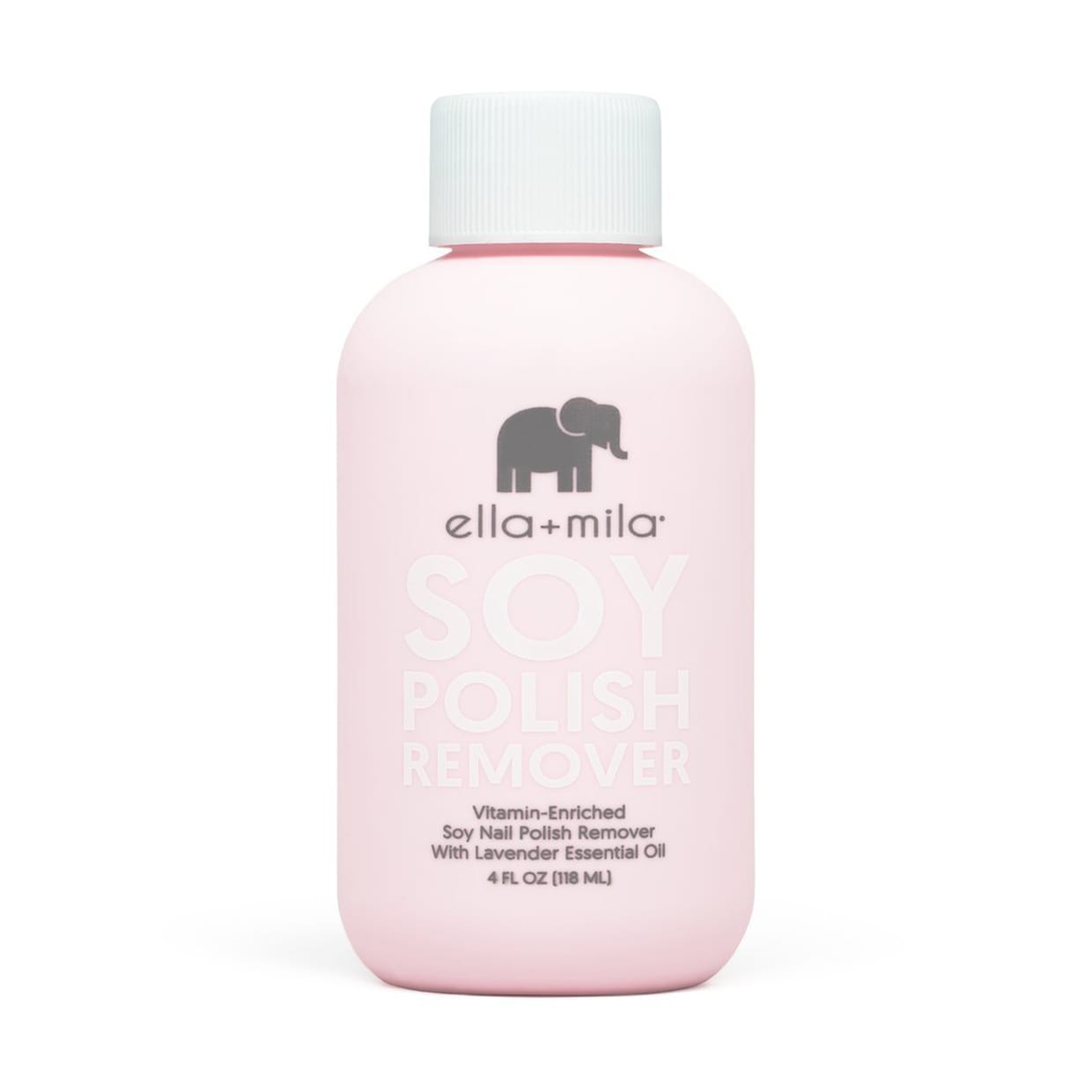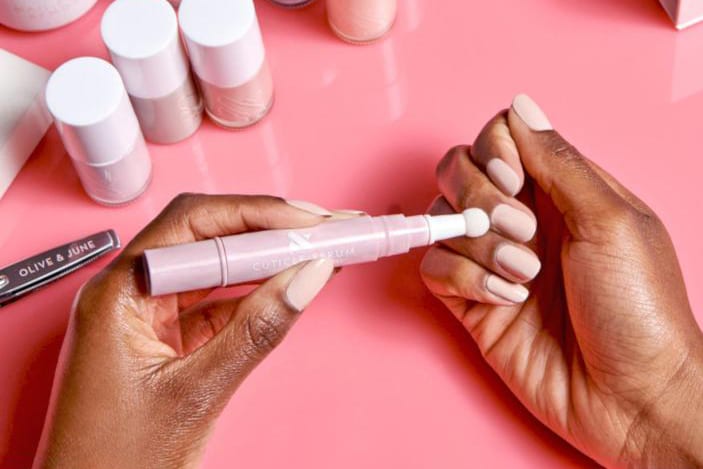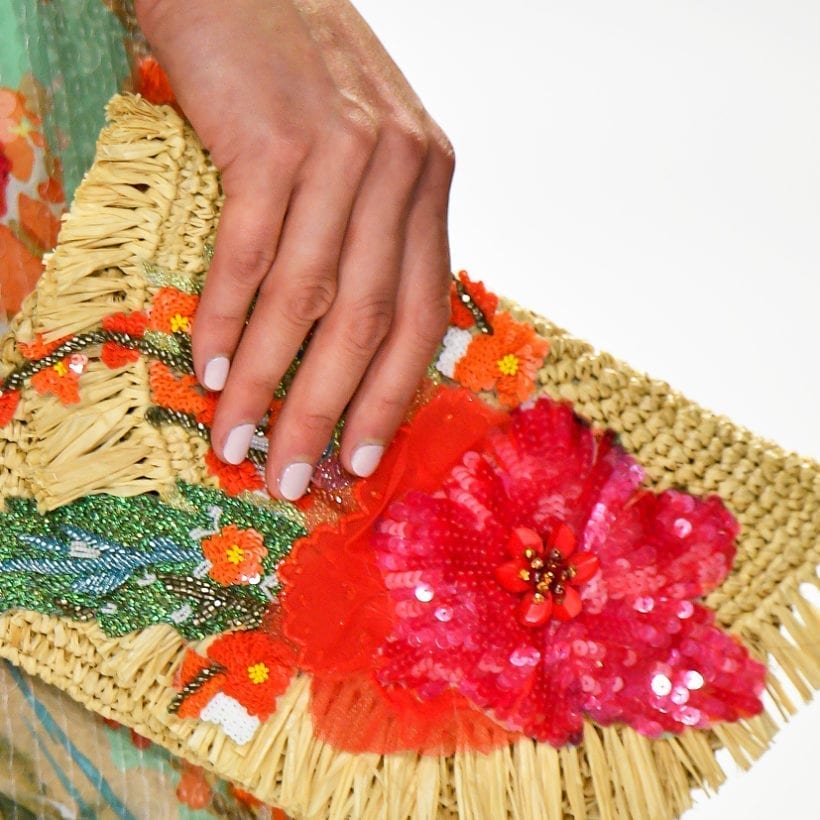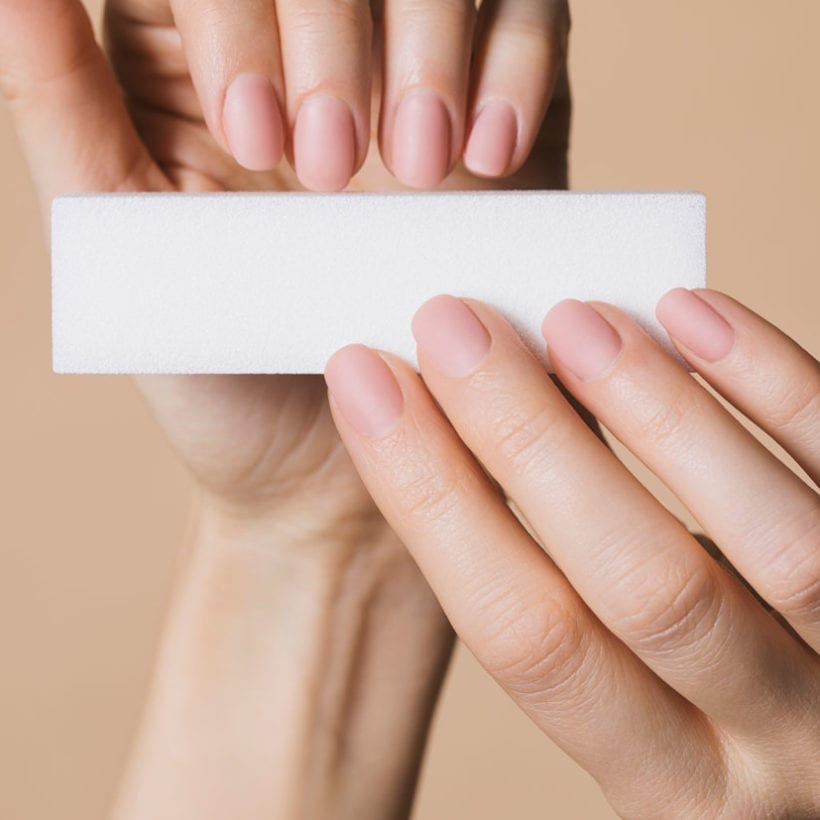Why does it feel like one day you are rocking perfectly long, strong nails and the next, a few of them are broken and chipped? Many people blame their genes for their nails being naturally weak, and for some that could definitely be the case. But your diet and lifestyle have a huge impact on your nail health, too. Actually, there are a lot of sneaky (and obvious) reasons that could attribute to your split nails. Below, we break it down to the top ten culprits — and what you can do about them.
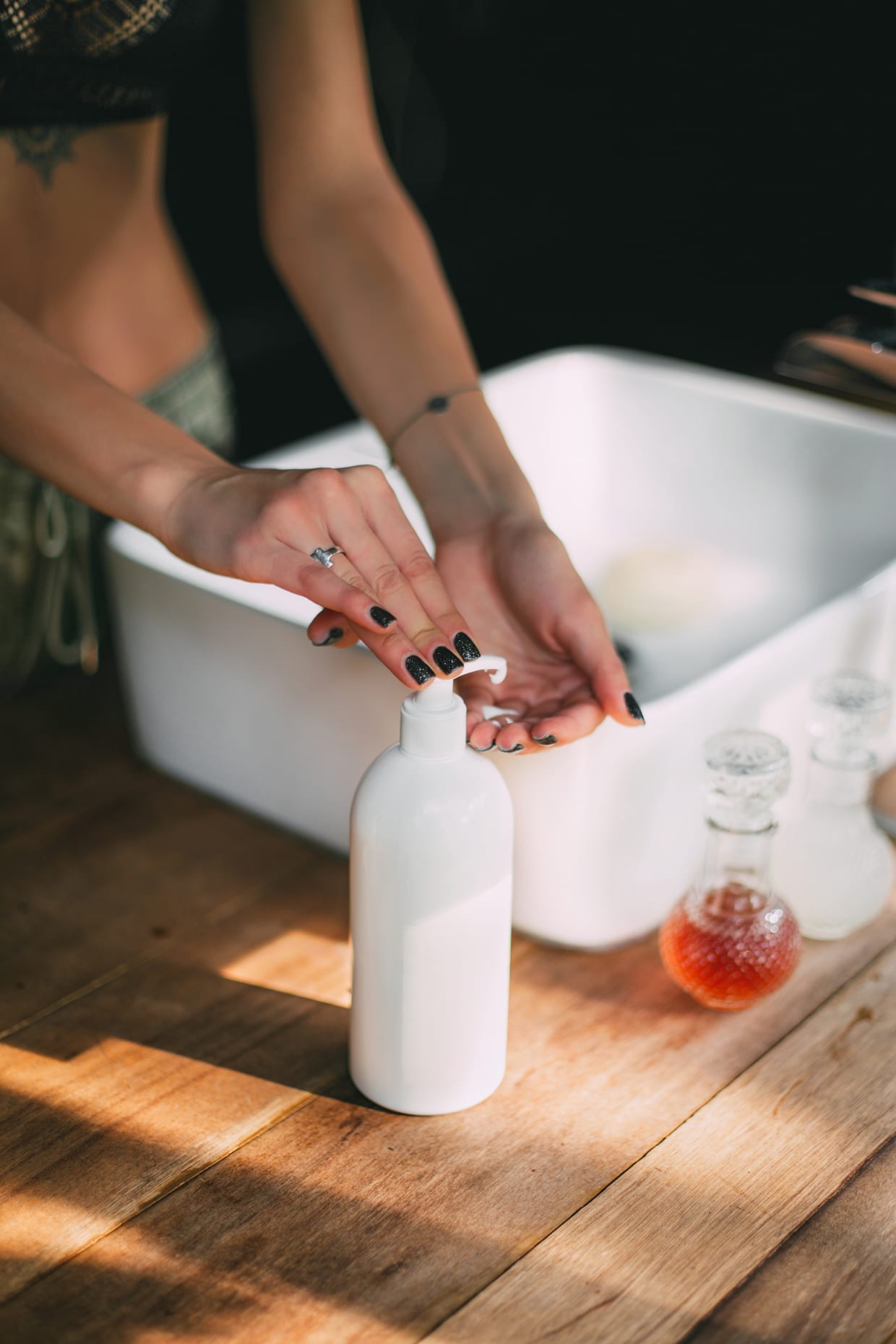
You are washing your hands more often than before.
“Washing your hands is the most important thing you can do to help prevent the spread of germs,” says Michelle Saunders, nail expert and founder of the Saunders & James nail salon. But there is a caveat: Frequently scrubbing your hands with soap and water can cause your nails to weaken and break easily.
The fix: “Rehydrate your hands, cuticles and nails after each hand washing by using your favorite lotion, oil or creme,” suggests Saunders. “Imagine not using a conditioner after shampooing your hair — it would be dry, brittle and break. So be sure to ‘condition’ your hands after washing. My favorite is the Essentiel by Adele Multi-Purpose Moisturizer.” It has the perfect blend of lightweight oils without being greasy. The Masque Bar Moisture and Nourishing Hand Masks deeply hydrate your hands, cuticles and nails and are a godsend for overly-washed, cracked hands.
You are biting your nails (oops).
Whether you do it out of nervousness, stress or a force of habit, biting your nails will likely cause a self-inflicted split, plus it decreases your nails’ strength over time.
The fix: Keep a nail file readily available, which makes it less tempting to take a nibble. You can also try an over-the-counter nail treatment that makes the nail taste bitter so you can kick the habit. Or, try to channel your anxiousness towards something else that keeps your hands busy (like cooking). Meanwhile, “a little nail glue can also be key to quick repairs until you can get to a salon or trim and file the nail yourself,” explains says Gina Edwards, celebrity nail stylist and ambassador for Kiss Products. “The KISS Precision Nail Glue has a point tip nozzle that’s perfect for precise application if you’re on-the-go.”
You are too rough on them.
It is easy to accidentally use your nails as tools, like when you are trying to open something wrapped in safety plastic or opening up your latest package in a hurry. Habits like these “can cause a crack or break in the nail,” says Edwards.
The fix: Use a box cutter or scissors to open packages and avoid using fingernails to scrape against hard surfaces.
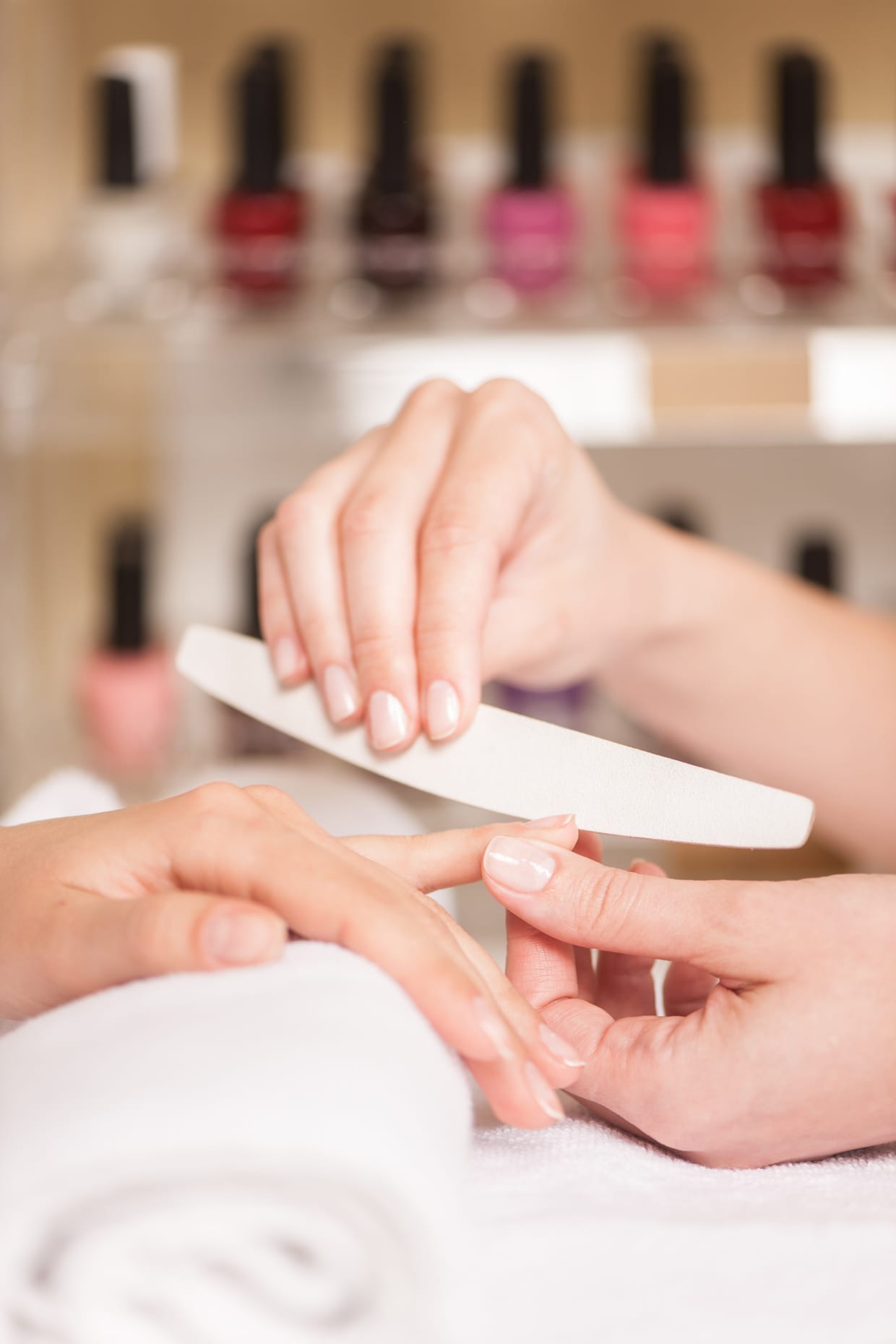
It is the manicure itself.
It is possible that chemicals and ingredients in a nail polish like toluene and formaldehyde can cause nails to become weak. When you wear gel or acrylics, your natural nails are usually filed down for application, meaning it breaks down the nail and can cause peeling to your natural nail. Plus, the removal process can be harsh on nails.
The fix: The good news? You don’t have to permanently give up on your favorite mani. For regular nail polish, try a five-free lacquer (we love Butter London) that’s safe of moisture-stripping ingredients. Use daily cuticle oil to keep nails hydrating. If there’s severe damage, take a break from your manis (sorry this isn’t a quick fix). While you wait it out (this can take around four to six months), keep your nails short to reduce your chances of breakage.
It is the shape and length of your nails.
“Stiletto nails (aka long and pointy styles) can easily snag on clothing and rip into things like pantyhose if you don’t approach with care and patience,” explains Edwards. Regardless of your preferred nail shape, if they’re too long or aren’t filed properly, they might catch on clothing and create splitting.
The fix: Keep a nail file in your everyday bag (the Tweezerman Lemon Filemate has a fun print and handy carrying case) so that you’re prepared for any unexpected nail snafus.
You are not getting enough protein.
“Since nails are basically made out of protein (called alpha-keratin), protein is one of the most important macronutrients you need to eat for healthy and strong nails,” says Brooke Alpert, nutritionist and founder of B Nutritious.
 The fix: “Make sure you’re eating a well-balanced diet that includes a high-quality protein at every meal,” says Alpert. “Think wild fish, grass-fed beef, organic chicken and nuts.” If you’re on a plant-based diet, you can find alternative plant-based proteins such as hemp proteins and pea proteins.
The fix: “Make sure you’re eating a well-balanced diet that includes a high-quality protein at every meal,” says Alpert. “Think wild fish, grass-fed beef, organic chicken and nuts.” If you’re on a plant-based diet, you can find alternative plant-based proteins such as hemp proteins and pea proteins.
You are lacking a B-complex vitamin.
According to the National Institutes of Health, there’s evidence that biotin, which is a B vitamin, encourages nail strength and health. It might be worth taking a look at your recent diet habits to see if you’ve been slacking on foods containing vitamin B, like dark leafy greens and lean proteins.
The fix: “Eggs are a protein super-house and the yolks contain biotin. You can also supplement with a vitamin that has biotin and a good quality keratin product like the Reserveage Très Beauty 3,” says Alpert.
You are removing polish with acetone.
Acetone nail polish remover can dry out your nails by stripping them of their oils, which makes them vulnerable to breakage.
The fix: Try a soy-based, acetone-free nail polish remover. If you need to use acetone, avoid soaking your nails in remover for extended periods of time. Either way, remember to moisturize your nails afterward.
You are stressed.
Stress causes our body to create more cortisol, which is a steroid hormone that’s like a fire alarm for your body. When we’re stressed, it can temporarily stop the production of a new nail.
The fix: As if you needed another reason to fully implement self-care into your everyday routine: “For the most part, a healthy diet and lifestyle will show in your skin, hair, and nails so it’s important to take care of yourself with sleep, managing stress and what you eat,” says Alpert. The source of your stress is unique to you, but consider apps like Calm that offer quick meditation sessions to ease anxiety.
Your nails are dehydrated.
Like your skin, nails can get dry, which makes them weaker and more vulnerable to cracks and breakage. “All nails are made up of the same thing as hair: keratin,” says Saunders. “It’s a protein that needs moisture and oil to stay supple.”
The fix: Saunders recommends using natural oils like avocado, coconut or almonds to give nails a quick moisture boost. For an easy way to hydrate your nail beds, try the Olive & June Cuticle Serum, which contains avocado oil, jojoba oil and hydrating fruit extracts and has a flexible tip for mess-free application. Make it part of your daily routine to drink tons of water to hydrate from the inside, out.
You could be sick.
New research shows that there is sometimes a link between COVID-19 and beau lines, (indentations that run across the nail, often caused by injury or losing a fingernail or toenail). “Any significant illness that causes stress on the body with high fever, infection, chemotherapy can cause the nails to slow in growth for a time period then once the body recovers the growth recovers,” Dr. Sandy Skotnicki, dermatologist and author of Beyond Soap says. “This is what causes a slight horizontal line or depression in the nail plate or Beau’s lines.” But before you panic that your Beau’s lines mean you have COVID, Dr. Skotnicki says that just having a mild case of COVID will not do it, you would “have to have a significant illness associated with a high fever.”
The fix: Unfortunately there’s no quick fix for Beau’s lines except time. “They will grow out. Typically on the fingernails, it takes about six months. You could file them down with a nail file to be less obvious,” Dr. Skotnicki says. You could try painting your nails with a dark shiny polish which can make the indentation less noticeable.
We only recommend products we have independently researched, tested, and loved. If you purchase a product found through our links, Sunday Edit may earn an affiliate commission.
Additional reporting by Grace Gallagher.
